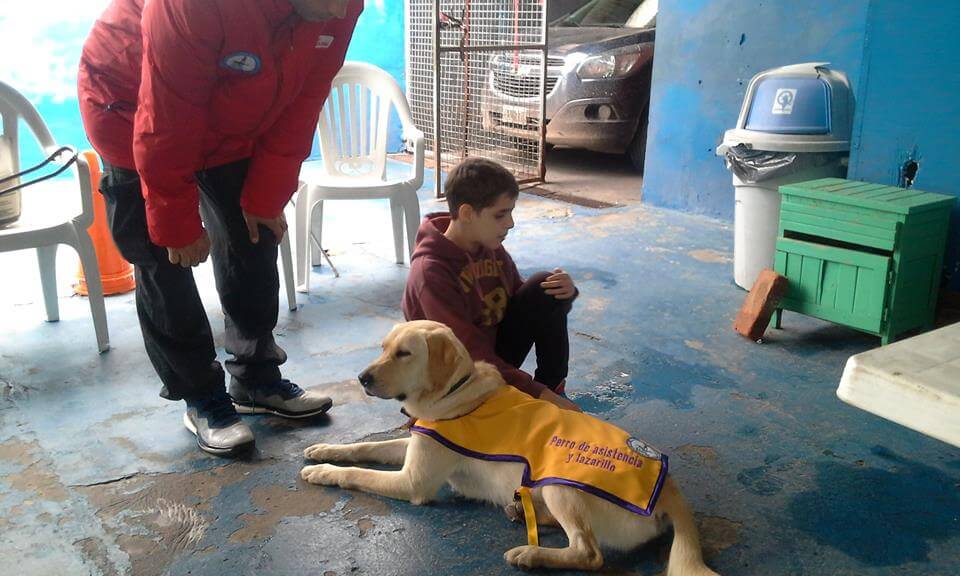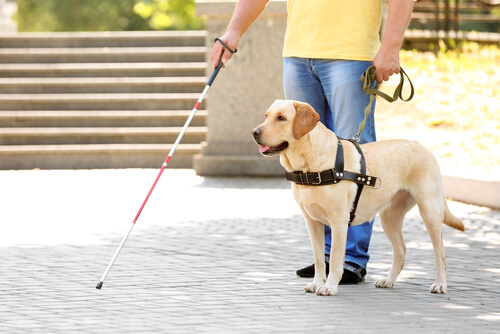Assistance Dogs: More Than a Faithful Friend

You just have to admire the dogs that provide help and service to needy people. Assistance dogs, through training, acquire the ability to socialize, which is necessary to provide physical and emotional support to a person with a disability.
A horse, a cat or a bird can fulfill the function of being a person’s companion, but not all animals perform the job of being a person’s assistant. Why? Because it’s a mission specific to dogs.
Let’s learn a little more about the work that these faithful furry friends do.
Assistance dogs and emotional support dogs

Emotional support animals and assistance dogs are both similar yet different in the way they can contribute to people’s lives. For example: a rabbit can help a person with depression by giving them company, yet a dog can assist the mobility of a blind person.
The emotional support can come from a home’s pet and it isn’t necessary for it to be a certain breed of dog.
Assistance dogs, after adequate training, can help people with epilepsy or Down syndrome. They can also help people with visual, hearing or cognitive disabilities. In this case, the dogs can lift objects and activate alarms.
6 categories of assistance dogs
Assistance dogs are dogs that can be trained and certified to perform a certain service. There are 6 categories of trained dogs, and they are the following:
- Guide dog: These are trained to guide a visually impaired or deaf-blind person.
- Sound signaling dog: These dogs are trained to assist the hearing impaired. These wonderful animals have the ability to identify the source sound to guide their owner.
- Service dogs are trained dogs that assist in the daily activities of disabled people.
- Warning dogs: These dogs learn to warn people about medical emergencies such as epilepsy.
- Autism assistance dogs: These dogs help to care for the physical integrity of a person with autism spectrum disorder.
- Assisted therapy dogs: These dogs collaborate with emotional support animals. They often visit geriatric centers and hospitals.
Breeds with a reputation as assistance dogs
Let’s start first with the Labrador and the Golden Retriever, because these dogs have a great acceptance in society due to their extraordinary capacity to create empathy with people. These breeds are allowed in restaurants, airports and shopping malls.
Some dogs are considered working dogs. These canines perform specific jobs, such as guarding, herding and defense. This also includes professional dogs that work for the police and firefighters.
Assistance dogs and their skills
When dogs meet the requirements to perform assistance dog functions, they undergo special training where they are taught the following skills:
- Opening drawers, retrieving things, and bringing objects to their owner.
- Helping to remove a person’s pants (trousers) by stretching the garment with their teeth.
- Turning light switches on and off in a house.
The qualities that a dog really needs to qualify as an assistance dog are to be extremely sociable and to have the ability to learn easily. In addition, trainers need to take into account that a dog shouldn’t respond aggressively to any external stimuli that may frighten it.
Assistance dogs in society

Assistance dogs are extremely noble animals, and when the dog ends its service because it has reached old age, it will still want to help its owner. Depriving the dog of that will can lead to depression.
The role that these animals play in society is fundamental, as their abilities help to improve people’s quality of life of people. The generosity of these canines brings out positive feelings in their owners because they are such loving dogs.
We encourage dog owners to train their dogs and develop their abilities; this will create an emotional bond with them and increase the feeling of well-being in the home. In this way they’ll also be able to put their skills into practice to help people in need.
All cited sources were thoroughly reviewed by our team to ensure their quality, reliability, currency, and validity. The bibliography of this article was considered reliable and of academic or scientific accuracy.
- https://es.wikipedia.org/wiki/Perro_de_asistencia
- https://www.nutro.es/expertos/articulos-de-perros/educacion-canina/perros-asistencia-terapia
This text is provided for informational purposes only and does not replace consultation with a professional. If in doubt, consult your specialist.